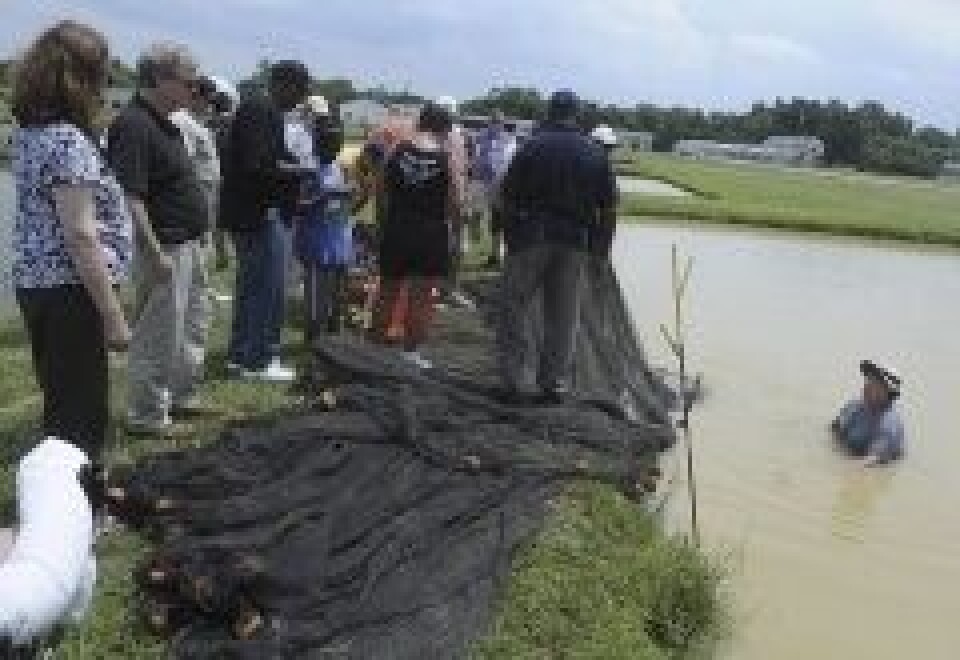
Virginia University teaching aquaculture
According to the United States Department of Agriculture, Catfish growers in the United States had sales of 403 million dollars (~€281 million) during 2010, up 8 percent from 373 million dollars (~€260 million) the previous year. The top four States (Mississippi, Alabama, Arkansas, and Texas) accounted for 94 percent of the United States total sales. The water surface acres being used for catfish production as of January 1, 2011, totalled 99.6 thousand acres, down 13 percent from the 115 thousand acres used a year earlier. Of the total acres, 3,150 are to be renovated during the period of January 1 to June 30, 2011. An additional 125 acres are under construction or expected to be constructed and in use by July 1, 2011.
Patrick Kane tells about an educational initiative from Petersburg, Virginia;
"Who here hasn't eaten catfish?" asked Brian Nerrie, Ph.D. Not a hand went up among the group of about 20 in the Cooperative Extension Pavilion. "Good crowd." A chance to process and cook up a few catfish from Virginia State University ponds was among the many learning opportunities offered to students in the annual Fish School. "The object is to provide hands-on exposure to aquaculture," said Nerrie, a specialist at the Cooperative Extension. They hope to teach more folks about the opportunities to raise fish and other alternative agriculture.
Wednesday afternoon, Nerrie was chest-deep in a pond, using a net to round up a sample of fish raised. They ranged from tiny fish to the kind of prime fish a farmer could hope for. "This is almost a two-pound fish," Nerrie began after scooping up a big catfish. The fish shook itself free. "That has demonstrated its desire for independence," he continued. As skies darkened, the class moved inside and peppered questions. Students came from all over Virginia, and even a pair from Delaware. "We're looking at what they have," said Mike Cinelli, a graduate student at Delaware State University in Dover. "It's very similar to what we've done," added Grant Blank, an aquaculture technician at the school. They were most interested in learning about fish processing, and sharing that knowledge with farmers. Many in that area raise fish to sell fresh in New York City, Philadelphia and Canada.
"We're looking at putting together a processing facility so we can do demonstrations for producers in Delaware," he said. "Right now, there is a growing interest in locally produced products," Nerrie said. That means more folks are looking for food grown close to home, and to personally know where their next meal came from. A small fish farm can fit that bill nicely. "Most of these products can be raised on small farms," he said, especially popular fish to cook and freshwater shrimp. "Fish are the last protein source we go out and hunt for," Nerrie said. "You don't go hunt for a chicken. All the inputs are under our control ... to provide a quality product to the consumer."
The class began Tuesday with an overview of aquaculture and the types of fish raised. Today, the students planned to go over water quality testing, marketing for fish and processing and cooking some fish. Nerrie said that medium to large-scale commercial production is not the only target for the class. "From those that are interested in raising food fish on a small scale to those who want to learn more about a beautiful aquatic landscape, "we have the opportunity to do it on a smaller scale."
"It's a good, receptive crowd," Nerrie said of the group, which included teens and adults of all ages and backgrounds.






















































